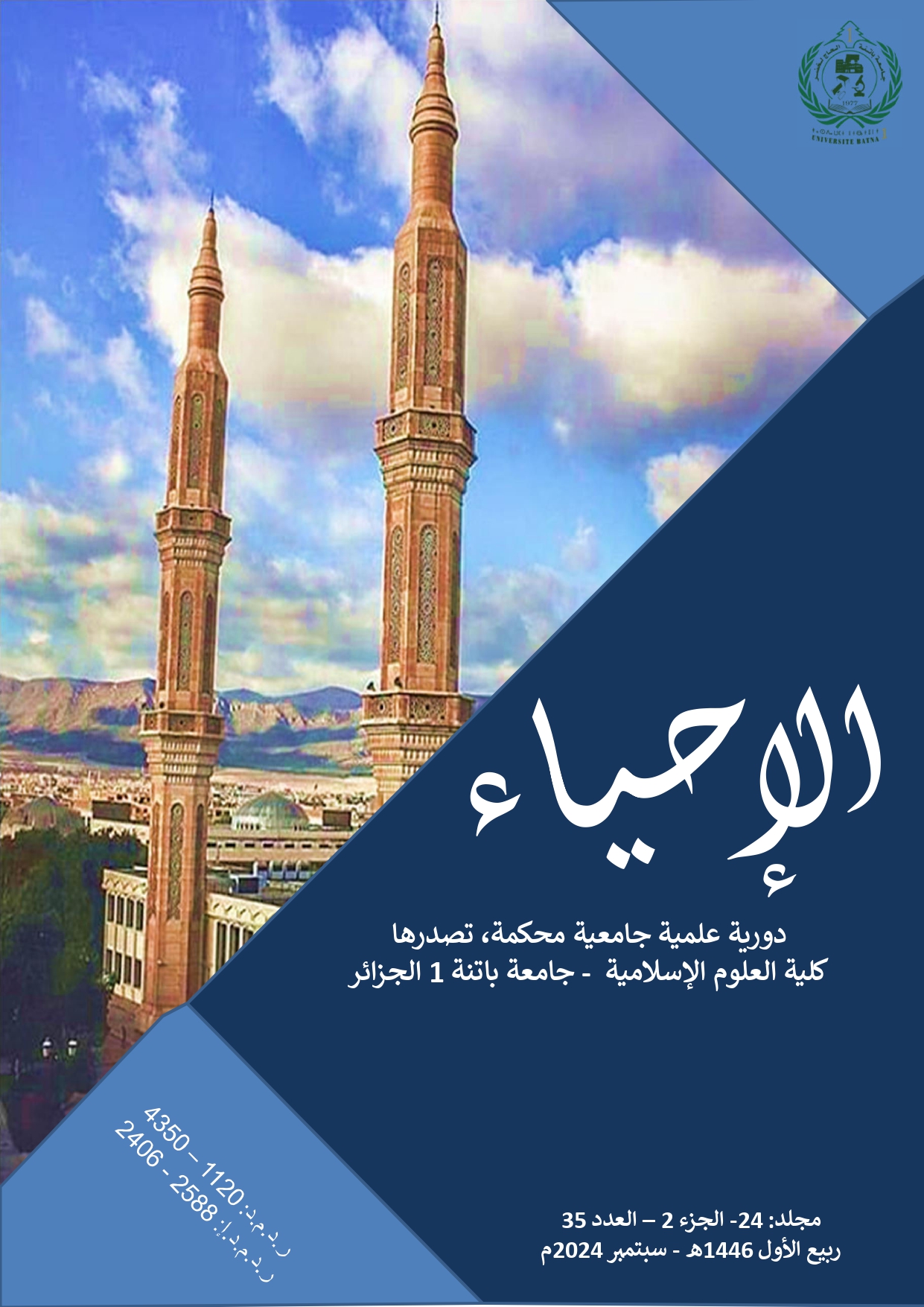The application of Custom (al-'urf) in issuing Religious Edicts (Fatwas) according to Imam Ash-Shatibi
DOI:
https://doi.org/10.59791/ihy.v24i2.4557Keywords:
Custom, Fotia, Ash-Shatibi, the MalikisAbstract
This research aims to highlight the role of custom (al-'urf) in issuing religious edicts (Fatwas) according to custom according to Imam Ash-Shatibi, by extrapolating, studying, and commenting on his fatwas. To achieve this goal, I began with a brief study of the background of this imam and his status among the scholars in his hometown of Granada in particular, and in Andalusia in general. Then proceeded to define custom (al-'urf) and differentiate it from habit (al-'adah) according to the Malikis. The research also explores the different categories of custom as perceived by Imam Ash-Shatibi, focusing on the characteristics of his fatwas. Afterwards I explained the practical application of custom in his fatwas through issues of faith, personal status, and transactions. To accomplish this, a number of steps were adopted, including extracting the fatwas that were based on custom from the book “Fatāwā al-Imām Ash-Shatibi”, categorizing them according to the topics of Islamic jurisprudence, analyzing, and presenting the opinions of other jurists of the same school regarding them. The research adopts an inductive analytical approach.
The significance of this topic lies in the connection between custom and people's lives, as well as it was the basis of many fatwas and rulings. The presence of custom in fatwas reflects the efforts of scholars to assess the public interest (Maṣlaḥah) within the framework of the textual evidence (naṣṣ).
This research concluded with several findings, including the fact that Fatwas based on custom are limited to matters that are not explicitly addressed in Islamic law or are subject to varying interpretations. It also concludes that rulings based on custom may change as customs evolve and that custom may prevail over the well-known opinions within the school of law and be implemented in practical applications.
Downloads
Published
How to Cite
Issue
Section
License

This work is licensed under a Creative Commons Attribution-NonCommercial-NoDerivatives 4.0 International License.





